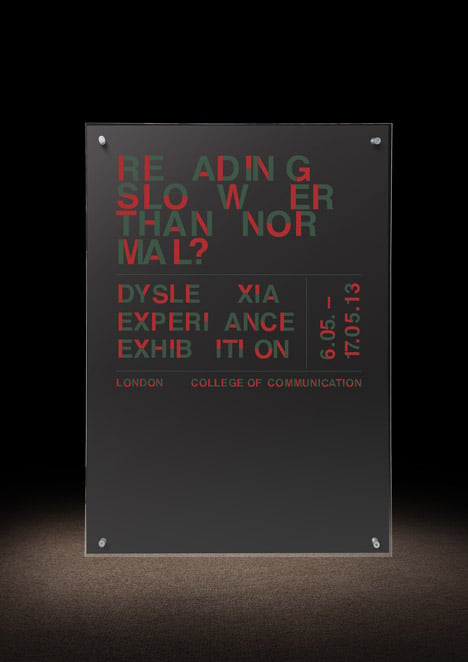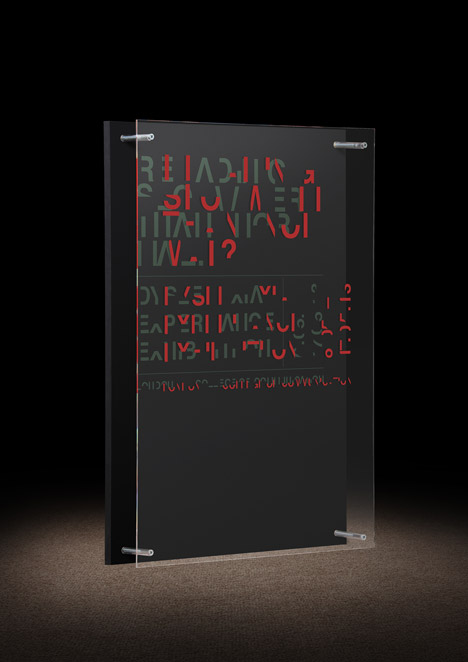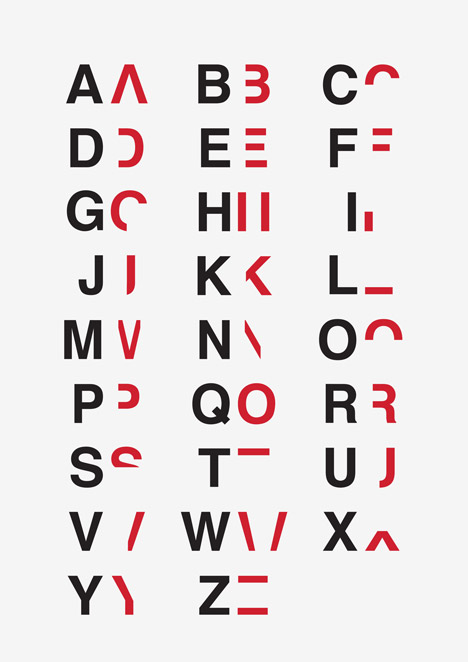Being dyslexic makes it more difficult to recognize patterns.
What might occur if the person were unable to recognize the pattern? What might occur if they were able to recognize the pattern, but it took additional time to find a particular card?
Dyslexics worldwide face this very challenge. The Yale Center for Dyslexia and Creativity estimates that 20% of the population is dyslexic, yet designers are generally ill equipped to create designs that are accessible for dyslexic users.
Dyslexia is a cognitive learning disability in which the brain has difficulty with phonological processing, or translating words into sounds. As a result, reading is a difficult task. Due to their cognitive problems in decoding written language, many dyslexics will confuse similar words so that “CAT” may be confused with “ACT”. Although dyslexia affects a large percentage of the population, it manifests in a variety of ways, such that one person might find his or her dyslexia makes reading mildly difficult while another struggles with even the simplest of sentences.
Statistics differ on the percentage of the population that has dyslexia. The British Dyslexia Association claims 10% of the population is dyslexic while the Dyslexia Research Institute in America claims it could be as high as 15%. Regardless of the exact number, the fact remains that this is an enormous number of people. The number of blind users, for example, pales in comparison to the number of dyslexic users, but it is likely that most designers have a far clearer picture on how to design for blind users compared to how to design for dyslexic users.
I developed ten questions that I wanted to ask dyslexic users:
- When were you diagnosed with dyslexia?
- How would you describe your dyslexia and the impact it has on others?
- What are the challenges associated with your dyslexia?
- What are the potential benefits of being dyslexic?
- What websites or mobile/tablet applications do you find particularly easy to use?
- What aspects of these sites or mobile/tablet applications make them easy to use?
- What websites or mobile/tablet applications do you find particularly difficult to use?
- What aspects of these sites or mobile/tablet applications make them difficult to use?
- What would you like people to know about dyslexia?
- If you have any comments or additional information, please write it below.
Some dyslexics said they had little trouble reading but had trouble writing; others were exactly the opposite. Some dyslexics explained that reading maps was their biggest challenge while others stated that their dyslexia extended beyond words to mathematics and that numbers gave them the most trouble. Still, others explained that they were clumsy and that this was connected to dyslexia. What I originally believed was an issue with words, extended far beyond just reading.
As noted, previous discussions of dyslexia in web design have centered on creating better typography or color contrasts. This, however, does little to quell the anxiety a dyslexic user may experience upon encountering an e-commerce website. Imagine having difficulty understanding how much money you’re about to spend or being unsure you’ve written your address correctly! One dyslexic wrote to me, “I am scared to pay things via Internet or to take money from machines [sic]”.
Second, I learned that some dyslexics see their dyslexia as an advantage. There is no “cure” for dyslexia, but many dyslexics find coping mechanisms that allow them to overcome the learning disability. The success of dyslexics in business, for example, has been well documented, with Richard Branson as perhaps the most high profile example.
In his most recent book, “David and Goliath: Underdogs, Misfits, and the Art of Battling Giants”, Malcolm Gladwell used dyslexia as an example of a “desirable difficulty” in an attempt to show that dyslexia may actually be an asset for some people. Gladwell points specifically to the number of successful entrepreneurs who are dyslexic and attribute their success to their dyslexia. Gladwell points especially to Gary Cohn, the President and COO of Goldman Sachs. This struck me as a strange assessment, so one question I asked many dyslexics was how they thought their dyslexia may have benefited them. Most dyslexics explained that their approach to problem solving differed from their peers. Dyslexics told me they were able to “connect the dots” in their head in a way that differed from others and that this was a distinct advantage in problem solving.
Taken from: http://www.uxbooth.com/articles/designing-for-dyslexia-part-1/
Dyslexia typeface:
London designer Dan Britton has created a typeface that's intentionally difficult to read to simulate the problems faced by people with dyslexia.
Design graduate Britton – who was diagnosed with dyslexia in his third year of university – wanted to create a typeface that would demonstrate the effects of the disorder, which impairs reading ability. Dyslexia is estimated to affect 10 per cent of the world's population, according to UK charity Dyslexia Action.
"What I wanted to do was recreate or simulate the emotions of reading with dyslexia to try and put across how frustrating it is to try and read something simple," Britton told Dezeen.
He sliced up the commonly used Helvetica typeface – created in 1957 by Swiss designer Max Miedinger – to delete 40 per cent of each letter and number, removing their key characteristics but leaving enough to make them just about legible.
The intention is that a reader has to take their time to decipher which letters are used in words and sentences, slowing them down to the speed of someone with dyslexia.

This is how the text usually looks to normal people, which is being used to promote and exhibition about dyslexia. Meanwhile, this is how it'll look to people with dyslexia...

Here is how the typeface compares with the Helvetica font:
